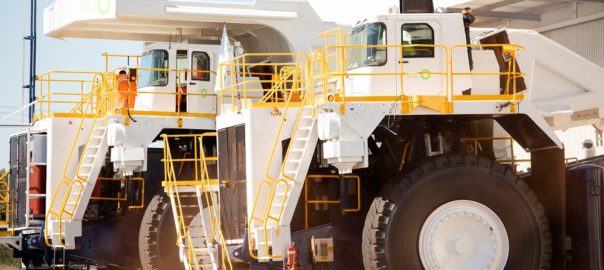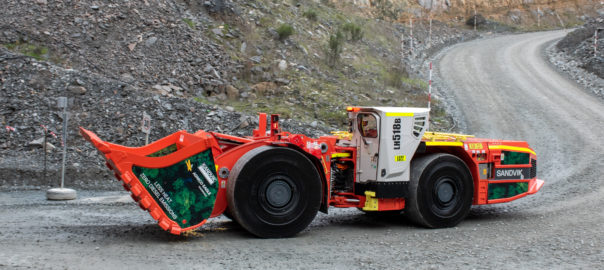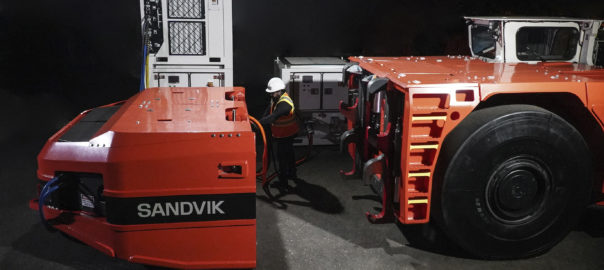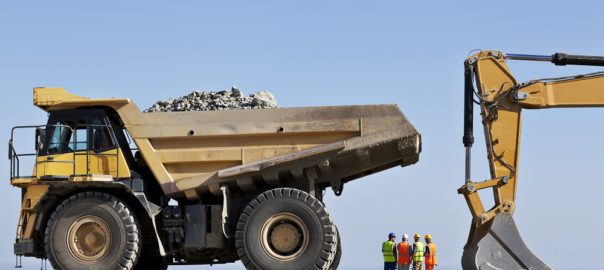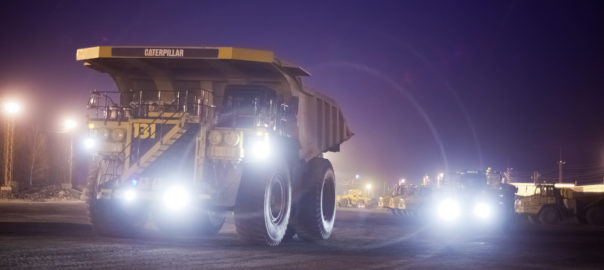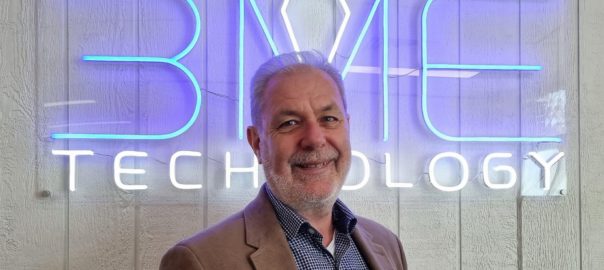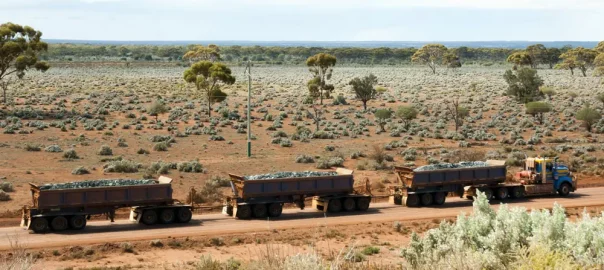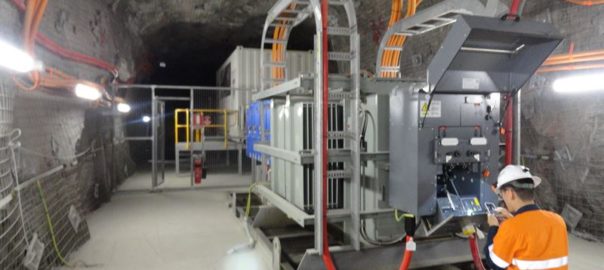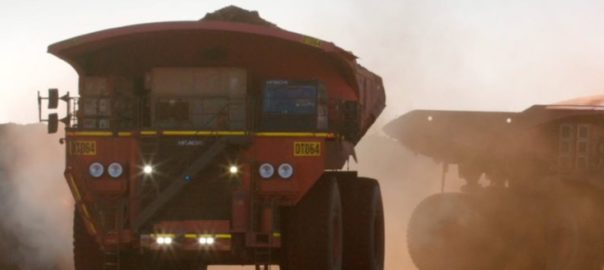Andrew Forrest’s statement on Fortescue Metals Group’s planned acquisition of Williams Advanced Engineering (WAE), an offshoot of the Williams F1 team founded by the revered, late Sir Frank Williams CBE, back in January was hardly understated.
He said: “This announcement is the key to unlocking the formula for removing fossil fuel powered machinery and replacing it with zero carbon emission technology, powered by FFI (Fortescue Future Industries) green electricity, green hydrogen and green ammonia.”
As time has progressed, the £164 million ($193 million) deal for the UK-based WAE closed (in March), and another significant announcement in the form of a tie-up between FMG, FFI, WAE and Liebherr has followed, the FMG Founder and Chairman’s words have looked increasingly prescient.
This became apparent to IM on a recent visit to WAE’s Grove headquarters in Oxfordshire, England.
What FMG now has on its books and what FFI is managing in the form of WAE is arguably one of the world’s leading decarbonisation technology companies.
WAE’s reach goes far beyond the pit lanes of a race track. Its impact is felt in the automotive, defence, aerospace, energy, life sciences and health care sectors – as an example, a Babypod 20, a Formula One-inspired environment for new-born babies in need of emergency transportation, was on display in the boardroom IM sat in during an interview at Grove.
One of its more recent market entries has been in mining, with WAE’s fingerprints on two of the industry’s major fuel cell electric vehicle (FCEV) haul truck movements.
Prior to the acquisition by Fortescue, WAE provided “electrical architecture and control hardware and software” for the battery system on a 100-day “sprint” FFI project focused on converting a legacy 221-t class Terex Unit Rig MT4400 AC electric drive, diesel-powered haul truck to run on a ‘green’ hydrogen 180 kW fuel cell system and a 300 kW/h battery.
For the nuGen FCEV truck that premiered at Anglo American’s Mogalakwena PGM mine in South Africa earlier this year, WAE supplied a 1.2 MWh battery pack that, along with multiple fuel cells amounting to 800 kW of power, propelled the converted 291-t-class Komatsu 930E around the mine site.
Input to these two projects put WAE on the mining map, but this represents a fraction of the impact the company is likely to have on mining’s decarbonisation journey going forward.
WAE is currently engaged on two major projects for FFI – one being the conversion of another legacy Terex MT4400 AC electric-drive truck to an all-battery powered setup and the other being an all-battery rail loco that FFI has named the INFINITY TRAIN™.
Both projects highlight the depth of battery system technology expertise that led FMG to acquiring the company in the first place – design expertise spawned from development across multiple sectors and operating environments, utilising the latest cell technology across all form factors.
There is a common thread that hangs between all this work, as Craig Wilson, WAE CEO, explained to IM.
“We develop our battery systems for the specific application, factoring in the duty cycle, the cost constraints, required performance and environment the solution will be working in,” he said. “In motorsport, for instance, you can imagine weight, aerodynamics and space are more critical than they are in mining.”
Being battery cell, chemistry and format agnostic, WAE has built up a reputation in the battery industry for specifying and developing a diverse pool of battery systems that continue to push performance to the limit.
Differentiated modelling
Sophisticated modelling and simulation tools – much of which has been developed in-house – are behind this, according to WAE’s Chief Programme Manager, Alec Patterson.
“We have detailed in-house simulation tools which allow us to develop and optimise a battery pack’s performance against any customer’s drive cycle criteria,” he said. “This includes thermal simulation where the team model the detailed internals of a cell, allowing them to understand exactly how each cell is likely to behave and, thereby, being able to optimise their cooling for increased performance. This comes from our motorsport heritage and the team’s ability to manipulate and analyse large amounts of data through supercomputer levels of processing power.”
Prototyping and field tests are designed to “validate” this modelling and simulation work, he added.
Battery design also calls for a strong focus on safety and this is where WAE’s extensive practical experience is fully utilised.
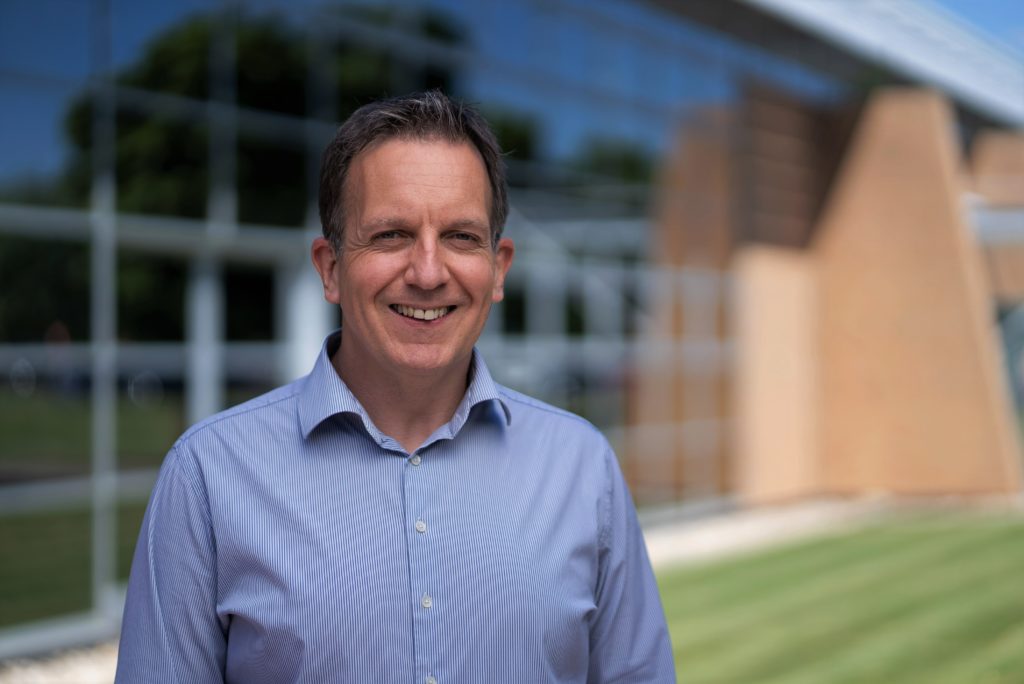
Patterson summarised this offering: “There are a number of ways the battery is developed to ensure cell safety. These range from understanding in detail the performance of the cell through practical testing, the design of the modules themselves and the monitoring of the cells for voltage and temperature throughout usage. WAE has developed its own Cell Monitoring Unit hardware and Battery Management Unit hardware and, combined, they monitor the status of the pack and control the performance outputs many times a second. In the FFI battery sub pack, dielectric (non-conductive) coolant is used so if a leak was to occur it wouldn’t cause an internal issue; detection of which would be through WAE’s propriety on-board sensors.”
Overlay these preventative measures with an array of experience in various fields that would have seen battery systems take significant G-shock loads and operate in high temperature environments – whether that be a crash on a Formula E circuit or an Extreme E race in the Sahara – and it is easy to see why FMG initially believed WAE had knowledge and skills transferrable to mining.
Patterson concludes that advances in quality within the manufacturing process will also add to the reliability of the sub packs. At WAE those advances come in the form of laser welding, which ensures each cell is connected robustly for maximum performance.
Battery prototype progress
All this and more are being factored into the 221-t all-battery solution WAE is currently focused on as part of the FFI and FMG brief.
The battery will take the place of the diesel engine and alternator and will plug directly into the Terex MT4400 inverter to drive the motors and rear wheels. The battery system will have a capacity of >1 MWh (final specification to be revealed at a later date) and will be charged by a “fast-charge solution” sourcing power from a renewable grid FMG has already setup as part of its 60 MW Chichester Solar Gas Hybrid Project.
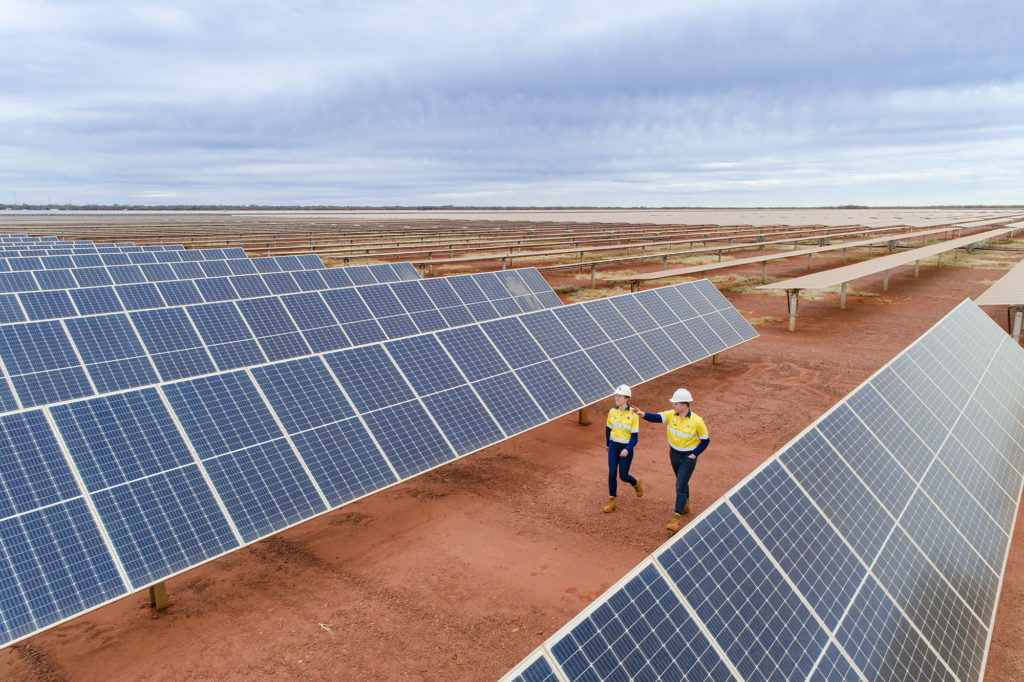
Once the battery system is delivered, integrated into the truck and commissioned at FFI’s Hazelmere facility, it will be transported to the Pilbara where it will start extensive testing outside FMG’s current mining operations.
WAE, FMG and FFI have overcome more than a few hurdles to get to the point where they can talk about such a plan.
While most of the battery houses in the UK can test each sub pack individually, WAE had to locate a specialist test house capable of testing out the full battery pack from both a motor-drive perspective and a battery re-generation standpoint.
This has seen the complete solution – a 12 t motor, inverter, cooling system, battery system and power distribution unit – begin testing a few months back.
Charging packs of this scale is one of the major industry challenges currently.
“Our charging strategy is centred around the individual cell chemistry and form factor which allows us to specify a higher rate of charge for the battery sub pack,” Patterson said. “To enable fast charging, a combination of a large charger and ability to cool the pack through the charging process is required, and our pack is designed for both.”
At the same time, WAE is aiming to further optimise the regeneration aspect of the electrification project, realising this is key to getting the trucks to complete as many haul cycles as possible without the downtime associated with a battery recharge – even if it is a ‘fast charge’.
“The real challenge is centred around how to manage the large accumulation of energy from the wheel motor during braking or retarding downhill fully laden,” Patterson said. “Do you send this to the battery or the resistor grid to burn off? Our job is to optimise the power electronics to make sure as much of that energy as possible goes back into the battery in order to make the whole system more efficient.”
The entire battery system will soon be shipped to Australia to go into the Terex truck at Hazelmere, at which point the charging system can be fully tested and the re-generation system trialled.
Leveraging gravity
This work will no doubt influence the other big project WAE is currently involved in for FFI and FMG – the electrification of FMG’s rail operations.
Fortescue’s current rail operations include 54 operating locomotives that haul 16 train sets, together with other on-track mobile equipment. Each train set is about 2.8 km in length and has the capacity to haul 34,404 t of iron ore in 244 ore cars.
A world first, zero emission INFINITY TRAIN concept has been put forward to replace this setup – which travels on some 620 km of track between the Cloudbreak mine and Herb Elliott Port at Port Hedland.

The regenerating battery-electric iron ore train project will use gravitational energy to fully recharge its battery-electric systems without any additional charging requirements for the return trip to reload, according to FMG.
The challenges associated with this project include the size of the battery and motor combination required to store enough energy from the fully laden, downhill journey from Cloudbreak to Herb Elliott Port to make sure the unladen trains can travel back without a charge, and the residual power and torque generation that would typically be applied to get the locos started.
On the latter, Patterson said: “Your contact area in terms of the wheel to rail is very small in comparison to the load, so our control strategy will utilise learning from our in-house VDC (vehicle dynamic control) software to design a solution that controls slippage for maximum adhesion.”
If an appropriate solution comes to the fore, the sustainable value is significant for FMG.
Fortescue’s rail operations consumed 82 million litres of diesel in the 2021 financial year, accounting for 11% of Fortescue’s Scope 1 emissions. This diesel consumption and associated emissions will be eliminated once the INFINITY TRAIN is fully implemented across Fortescue’s operations, significantly contributing to Fortescue’s target to achieve “real zero” terrestrial emissions (Scope 1 and 2) across its iron ore operations by 2030.
Electrification for everyone
Just as WAE’s involvement in the conception of the first Formula E battery led to wider electrification in motorsport, WAE believes its work in mining will have far-reaching ramifications across the off-highway sector.
Just how far reaching it will be is dictated by the most significant project – in terms of scale and timeline – WAE has on its books.
In June, FMG announced a partnership with Liebherr for the development and supply of green mining haul trucks for integration with the “zero emissions power system” technologies being developed by FFI and WAE.
Under the partnership, Fortescue will purchase a fleet of haul trucks from Liebherr; a commitment that represents approximately 45% of the current haul truck fleet at Fortescue’s operations, with truck haulage diesel consumption representing approximately 200 million litres in the 2021 financial year, accounting for 26% of Fortescue’s Scope 1 emissions.
The zero emissions power system technologies are expected to be fitted on machines based off the 240-t T 264 model to be deployed at its Pilbara mining operations. They could include both battery-electric and FCEV configurations, hence the reason why the all-battery prototype project and the FCEV project are so significant.
With the first of the zero emission haul truck units expected to be fully operational within Fortescue mine sites by 2025, FMG, WAE and Liebherr look set to take the electrification lead over its mining company peers.
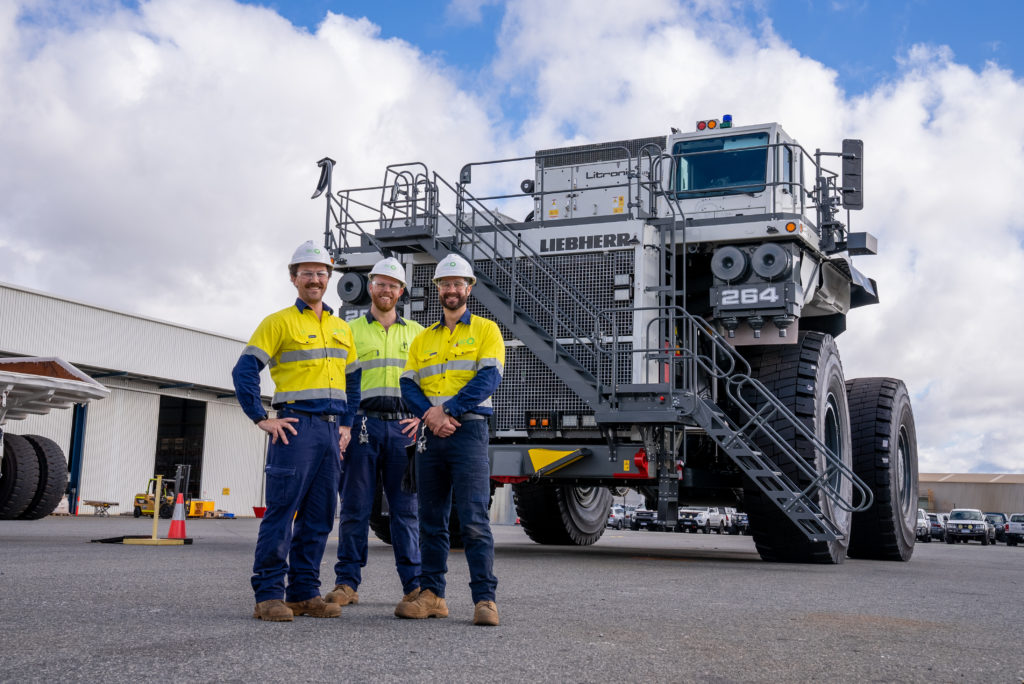
Yet Wilson says this type of solution could turn into a commercial product that others select for their own decarbonisation program – hence the industry-wide electrification potential.
When asked the question whether the company may still supply battery systems to the likes of Anglo American (as it did for the NuGen truck) under the new Fortescue ownership, he replied: “We could do, but the decision is not just down to us.
“Through the relationship with Liebherr, the intention is to provide really competitive products that are available to other mining companies, whether it be Anglo, Vale or BHP, for example…The absolute intention is not to come up with a development or product that is just for Fortescue.”
In this respect, he likens FMG to Tesla in the way the electric car manufacturer has acted as the catalyst to fundamentally change the automotive sector’s electrification approach.
“Tesla, today, is nowhere near being considered a large automotive manufacturer by industry standards, but they have created a catalyst for everybody else to move from in terms of battery-powered cars,” Wilson said.
“They have almost coerced the rest of the manufacturers to move this way; you only need to look at VW Group now – one of the world’s largest car makers – that is committing the majority of its business towards electrification.
“The difference with Fortescue is it is both the operator of these vehicles as well as the owner of the technology (through WAE). It is developing these products to use them, putting its whole business on the line.”
This extends as far as looking at its own mining operations and how it can optimise the pit profile and infrastructure to benefit from all the advantages expected to come with battery-electric haulage.
“Both the Fortescue mine planning and decarbonisation teams are working hand-in-hand with us to develop a mine site for the future of electric mining,” Patterson said. “We are working together to answer the questions about what needs to change to operate these trucks to maximise uptime, where to put the charging points, how to optimise the charging, etc.
“That work is going to be really important for us in terms of developing a commercial solution that provides the sustainable gains over the long term and decarbonises the entire fleet.”
Even when factoring in a project that takes ‘stretch targets’ to a new level, that is reliant on sourcing components from an evolving electrification supply chain, and that is scheduled to see solutions arrive within three years of finding an OEM partner in the form of Liebherr, it’s hard to doubt WAE, FMG, FFI and (of course) Andrew Forrest from steering such a project through to the finish line.
After that, it’s a matter of the rest of the industry catching up.







